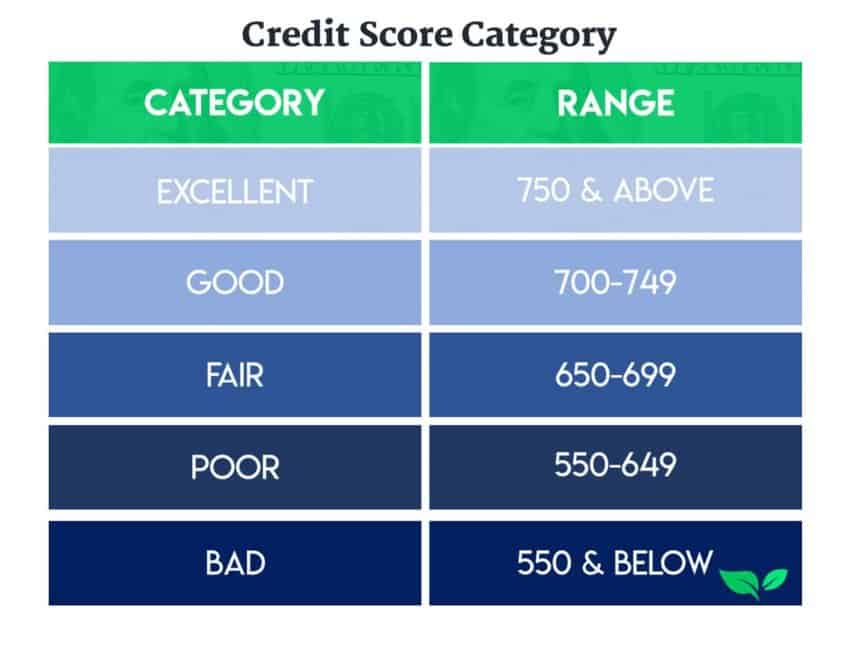How to Buy a House for the First Time (Beginner’s Guide)
Our readers always come first
The content on DollarSprout includes links to our advertising partners. When you read our content and click on one of our partners’ links, and then decide to complete an offer — whether it’s downloading an app, opening an account, or some other action — we may earn a commission from that advertiser, at no extra cost to you.
Our ultimate goal is to educate and inform, not lure you into signing up for certain offers. Compensation from our partners may impact what products we cover and where they appear on the site, but does not have any impact on the objectivity of our reviews or advice.
The key to purchasing your first house is preparation. That means understanding your credit score, knowing what payment you can afford, getting pre-approved for a mortgage, and finding the right agent to help you through the process.
Learning how to buy a house is an exhausting, confusing, and often frustrating procedure.
There’s so much to understand and process, from selecting the right mortgage, to picking the right real estate agent, to financially preparing for homeownership. It’s easy to get intimidated.
The best way to avoid that is to increase what you know about buying a home.
Because the more you know, the better choices you can make. And when you make informed choices, you save yourself time and money and end up purchasing the home of your dreams.
How to Buy a House in 9 Simple Steps
As long as you follow a step-by-step plan when buying a house for the first time, you can avoid much of the stress that accompanies the process.
Step 1: Get Financially Prepared
Before you even consider where you want to live and how much house you can afford, you should ask yourself “how should I financially prepare for buying a house?”
Pull your credit report
Whether you have good or bad credit, you want to pull your credit report to know where you stand.
You can look at your credit report from each of the three main credit bureaus for free once a year. Go to AnnualCreditReport.com, fill out the required information to confirm your identity, and review your report. If you have problems or any issues with some accounts, you’ll find those at the top of your credit report. Take note of them so you know where to begin fixing your credit.
Even if you think your credit history is excellent and there are no adverse issues, still check your credit score and report. There could be a mistake in it. For instance, maybe you’ll find an account in collections from the public library for not returning a book. It seems small and inconsequential, but it makes a difference when you’re shopping for a mortgage.
Lenders don’t like to see borrowers with adverse accounts or any accounts in collections, so be sure to resolve those before talking to a bank about a home loan. An easy way to view your credit report and get help with challenging any adverse actions is through a service like Credit Karma.
Credit Karma is a free credit reporting and monitoring service that provides your credit score from two credit reporting bureaus, giving you a more comprehensive picture of where you stand. You can get updated scores every week as well, which is helpful if you’re actively working to improve them.
Improve your credit score
If your credit score isn’t great, you can use your credit report to find valuable information for improving your score.
To start, it’s good to know what variables affect your credit score. These include:
| Payment History | 35% |
| Accounts Owed | 30% |
| Length of Credit History | 15% |
| Credit Mix | 10% |
| New Credit | 10% |
Looking at this breakdown, you can see what a huge role your payment history plays in your credit score.
Your payment history is the record of all the bills you’ve paid on time. Banks prefer a history of timely payments because it means they will likely get paid on time if they loan you money.
If you have late payments on your credit report, don’t stress. You can’t undo the past. And although your late payments over 30 days will remain on your credit report for seven years, you can work to demonstrate that you are now current on all of your accounts.
Be prepared for your potential lender to ask about any late payments. If they do, explain honestly why the payments were late and how you’re working to fix the issues. Point to your current good standing with your accounts as proof. They will hopefully take that into consideration and lend you the money.
Don’t take out new loans
Once you start the home buying process, try to avoid taking out new loans. Although part of your credit score relies on a good account mix, this is not the time to add new accounts to your report. Taking on new loans, even if you can technically afford them, can affect your credit score and your debt-to-income ratio, or DTI.
So while you’re in the middle of checking your credit, getting pre-approved, and seeing how much home you can afford, it’s a good rule of thumb to avoid taking out any new car loans or applying for new credit cards.
Eliminate high-interest debt
Another quick way to improve your credit score is to pay down any outstanding debts you may have. The amount of money you owe in relation to your credit limits makes up 30% of your credit score. If you’re maxing out your credit cards and using up most of your available credit, you’ll have a lower score. Before applying to lenders for a home loan, try to pay off as much consumer debt as possible to improve your score.
If you need to find a way to get extra money so you can pay down debt, you have two options: cut back on expenses or earn more money. If you’re not sure where to start with cutting expenses, create a budget. List all of your bills, subscriptions, monthly obligations, and other debts to see where you have room to reduce the cost. If you’ve never made a budget before, the 50/30/20 budget format is easy to follow and use.
You can also consider a service like Trim to help you navigate through cutting expenses by doing the work of canceling unwanted subscription services and negotiating bills on your behalf.
If you feel like you’ve cut back on as many expenses as you can, the next step is to pick up a gig to make more cash. Make sure you’re using this money to eliminate your outstanding debts (or save for your down payment) rather than using it for frivolous expenses.
Set a monthly savings goal
Once you’ve pulled your credit report, repaired adverse accounts, and worked to get out of debt, it’s time to set monthly savings goals. You’ll need a down payment, ideally 20% of your home purchase price (although you can purchase a house with a lower down payment), and enough money for closing costs in order to buy a house.
In order to stay motivated to save money every month, put a picture of your dream house on the fridge. Set reminders. Work together with your spouse as accountability partners to reach your goal of homeownership. If you’re single and buying a home, find accountability through your parents, coworkers, or friends.
As far as where to keep your down payment savings, consider a high-yield online savings account, which is preferable to investing for short-term goals like buying a house. This way, the money is earning some interest while you save to buy your home.
Step 2: Determine Much House You Can Afford
Banks often approve people for a bigger mortgage than they need, but that doesn’t mean you have to use all of it. You know how much house you can afford, and that’s what you should stick to. But how can you figure that out? Use the rules below.
28% rule for mortgage payments
The 28% percent rule means that your mortgage payment should be 28% of your gross monthly income or fewer. Some financial experts actually recommend that it should be 25% of your monthly income or fewer.
Keep in mind that your total income is your gross, not net income. Gross income is what your paycheck looks like before taxes, health insurance, and other expenses are deducted. Net income is your income after those expenses have been taken out.
If you live in a higher cost of living area like the New York City metropolitan area or in parts of California, this percentage might be higher. Keep in mind, though, that the goal is to not overextend yourself. By sticking to the 28% rule, you will have a house payment that’s manageable with your gross income.
32% rule for total housing costs
The 28% rule mentioned above applies just to mortgage payments, but there are more costs to consider when buying a home. For example, you’ll have to pay homeowner’s insurance, and if you put down less than 20% in a down payment, you’ll likely have to pay for private mortgage insurance (PMI), too.
The 32% rule says that all of these payments combined — mortgage, PMI, and homeowner’s insurance — should not exceed 32% of your gross income.
40% rule for total monthly debt payments
Lastly, if you have other debts you’ll still be paying as a homeowner, like student loan debt, credit card debt, or a car loan, stick to the 40% rule. This rule says that the total of all of your debts, including your house payment, should be no more than 40% of your total gross income.
While these percentage rules aren’t set in stone, they provide good guidelines to ensure you can afford not only your mortgage payment but your other bills, too. You don’t want to overextend yourself or your finances.
Buying a home isn’t a quick process, but it is a worthwhile one. And once you get your finances organized, you can start thinking about where you want to live.
Step 3: Settle on Where You Want to Live
When you’re deciding to buy a house, you also need to decide where you want to live. It might seem like you already have the answer or even know the exact neighborhood you prefer, but it’s important to keep an open mind when you’re buying a home.
What to know about desirable neighborhoods
Sometimes, highly desirable neighborhoods also have high markups. You might be surprised to find an equally beautiful, but less expensive, neighborhood just 15 or 20 minutes away from where you think you want to live.
If you’re set on living in a certain neighborhood, consider buying the least expensive house in the neighborhood. If you have DIY skills or are willing to invest more in your home over time, you could increase the value of an older home simply by updating or renovating it.
Consider school districts
If you have children, carefully research school districts’ zoning maps or feeder patterns. You don’t want to think the house you’re buying is squarely in the district you want only to realize later that it isn’t. Also, every school district is different. Some allow you to go to any school within the district while others only allow you to go to the school closest to your specific neighborhood.
It’s important to know that information ahead of time as it might affect where you choose to buy a house.
If you don’t have kids yet and plan to have them in the future, consider homes that are further out from your desired area. Specific neighborhoods near good school districts might be too competitive, and it might be wise to buy a less expensive home, build equity, and then move into a specific district once you have children.
How long do you want to live there?
Buying and selling homes can get expensive. There are closing costs, real estate agent fees, and moving costs to consider. It’s not something you should do every year or even every few years because of these expenses. Ideally, strive to live in a home for at least five years before you consider selling it. This allows your home time to appreciate in value before you sell.
When you’re thinking about where to live, consider how long you want to live there. If you want kids, try to picture your future family living in that home as well. Will it accommodate more than one kid? Pets? Aging parents? Take all potential variables into consideration when deciding how long you can comfortably live in a house.
Step 4: Determine How Much You Need for a Down Payment
Saving for a down payment is an important part of the home buying process. It takes discipline to save several thousand dollars for this purpose, and the more you save, the bigger percentage of your home you will own and the lower your mortgage payment will be. A first-time home buyer down payment isn’t any different from an experienced home buyer down payment.
Here’s what you need to know about down payments.
Most lenders prefer 20%
If you want to qualify for a conventional mortgage, lenders prefer that you put 20% down on a home. Let’s say the house you want to buy is $200,000. This means you should save $40,000 for your down payment.
Keep in mind your down payment doesn’t cover other costs associated with closing on your home. You’ll still need to save additional money for the inspection, closing costs, and realtor fees.
Put as little as 3.5% down with an FHA loan
If you’re wondering how to buy a house with no money down, an FHA Loan might be your closest option.
Not all home loans require 20% down. If you qualify for an FHA Loan, which is a common option for a first-time home buyer loan, you can put down as little as 3.5% to purchase your home.
Keep in mind, though, if you only put down 3.5%, you might be subject to a higher interest rate as well as PMI.
PMI
PMI, also known as private mortgage insurance, is an additional bill you have to pay if you put down less than 20% on a home. This isn’t money that goes towards paying down your mortgage loan, although it can be rolled into your monthly mortgage payment. It is an insurance payment that you make.
Because you put down less than 20% on your home, the bank considers you a riskier borrower. The insurance protects them should you ever foreclose on your home.
One thing to note is that once you’ve paid the mortgage down to 80% of the home’s appraised value, you can ask your lender to remove the PMI. So while you’ll have to pay this for a while, you can initiate the process to have it removed.
VA loans
If you served in the military, you might be eligible for a VA loan. VA loans are a different type of loan because you can buy a home for $0 down without having to pay PMI. The reason is that a portion of each VA loan is backed by the federal government. There are fees and potentially higher interest rates with a VA loan, so it’s important to compare the pros and cons of a VA loan versus a conventional mortgage before deciding which is best for you.
USDA loans
The USDA offers zero down payment, low-interest mortgages for eligible home buyers in rural and suburban areas. They are issued through the USDA Rural Development Guaranteed Housing Loan Program administered by the United States Department of Agriculture.
There are income eligibility requirements, and the property must be in a USDA-determined rural area. But if you, and the homes you’re interested in, meet these requirements, these loans are a solid mortgage option.
First-time home buyer programs
If you’re buying your first home, it’s important to see if you qualify for first-time home buyer programs. The FHA loan program and the VA loan program are options, but there are others, like the HUD Good Next Door Neighbor program, which helps teachers, firefighters, police officers, and other personnel buy their first homes.
There are also other first-time home buyer benefits, like grants, that you can apply for. You can find those grants by talking to your real estate agent or brokers because many of these grants are state- or income-specific. You can also look at first-time home buyer programs online to see what grants might be available to you in your area.
Don’t forget about closing costs
As mentioned, you’ll also need to save for closing costs. Some buyers do ask the seller to pay for part or all of closing costs during the sale, but you shouldn’t count on this. Instead, speak with your real estate agent to get an estimate of closing costs. By law, they are required to give you the exact amount you have to pay in closing costs a few days before your closing date.
Beware of wire fraud
In the days leading up to your closing date, you’ll get information about where to send your money for closing. Unfortunately, over the past few years, there have been numerous reports of wire fraud and phishing scams.
Hackers can break into your real estate agent’s email, and instruct you to send your money to a completely different account. Once you wire money to the wrong account, it’s very difficult to recover it. Make sure to call your real estate agent before wiring to confirm the correct account numbers over the phone before sending your payment.
Tax credits and deductions
In your research of home buyer benefits, you might come across information on first-time home buyer tax credits. That’s usually referring to the federal tax buyer credit that President Obama created during the 2008 recession and housing crisis. Unfortunately, that tax credit is no longer to new homeowners.
However, all homeowners can deduct the interest paid on their mortgages on their taxes as well as several other expenses, like moving costs. Once you become a homeowner, it’s important to research any change in tax law as it relates to owning a home or consult an accountant to ensure you’re getting the biggest tax benefits possible.
Step 5: Get Pre-Approved for a Loan
As evidenced by this list, it might take some time to financially prepare to buy your first home. All of that is important because it leads you to a crucial home buying step: securing a loan.
Pre-qualified vs. pre-approved
You might have heard two terms when it comes to getting initial bank approval for a home loan: pre-qualification and pre-approval.
Pre-qualification happens when you submit your financial information to a lender, either over the phone or online, and they provide an approximate home price you can afford based on that information. This is not a guarantee for a loan; it’s more of a snapshot to let you know where you stand. Think of it as the first step in actively searching for a home to buy.
If you do not get pre-qualified based on your financials, you know that you have to continue to work on your credit, save more for a down payment, and do whatever else is needed to purchase a home.
If you do get pre-qualified, you can begin looking for a buyer’s agent. Eventually, you will need to get pre-approved for a loan, which is different from pre-qualification.
Requirements for pre-approval
Mortgage pre-approval is more official than pre-qualification. Pre-approval acts as a conditional commitment from the bank to give you a mortgage. As such, you’ll need to provide a lot more information than you did during the pre-qualification process.
Here is a list of documents your lender will likely request during pre-approval
- Proof of income
- Proof of assets
- Employment verification
- Identification documents
- Social Security numbers to run credit
Your lender will review all of this information, and you should be prepared to answer some questions. For instance, they might ask you to explain past credit mistakes or ask for previous employment data. If you’re self-employed, you will likely have to show two years of profit and loss statements from your business. If you haven’t been in business for two years yet, you might have to delay the homeownership process until you can prove you have a steady income.
After your lender reviews these documents and determines that you’re a good risk (meaning you’ll pay them on time and not default on your mortgage), you’ll get an official pre-approval letter. The pre-approval letter is a key piece of the home buying process. It demonstrates that you’re serious about purchasing a home and that you have the money available to do so. In fact, some listing agents won’t even show homes to prospective buyers who haven’t been pre-approved.
Having that letter removes the risk of you being denied a loan after making an offer. It also often makes listing agents more willing to work with you.
Step 6: Find a Buyer’s Agent
Finding a good real estate agent is integral to buying a home. You want someone with experience, patience, and a willingness to help you through this process.
Keep in mind that not all real estate agents are Realtors. A Realtor is a special designation that real estate agents can get for being members of the National Association of Realtors, which has a strict code of ethics they must abide by. Here are a few ways you can find a real estate agent or Realtor.
Word of mouth
Start your search by asking friends and family members for recommendations of real estate agents in your area. Ask why they recommend them. Is it because they got them a good deal? Is it because they carefully explained the process?
You want to find an agent who will help you through this process whether it’s your first time buying a house or your tenth.
Online search
Some of the most popular websites to find real estate agents are Realtor.com, Redfin, and Zillow. Carefully and thoroughly read all the reviews to make sure the person you want to work with is responsive and knowledgeable about your area.
Buyer’s agents vs. listing agents
When you’re buying your first home, you’ll be looking for a buyer’s agent.
Although real estate agents can do both, sometimes they specialize in one or the other. A listing agent is an agent who lists your home for sale. They’ll be responsible for helping you price the home, inviting buyer’s agents to come to open houses, and more. A buyer’s agent, on the other hand, works just with you — the buyer — to help you through the whole home buying process.
It’s okay to be picky when selecting a buyer’s agent so if you don’t feel comfortable with the first one you find, move on to another. You want someone you can trust to look out for your best interest. After all, this is the person who’ll be your advocate on everything from negotiating the selling price, to what the seller will pay during closing, (think commissions, closing costs, etc.) to helping you find a fair and unbiased home inspector.
Step 7: Find a Home You Love
Now that you’re pre-approved for a loan and have a buyer’s agent, it’s time to start looking for your home. An easy place to start is browsing listings online. You can even attend open houses in neighborhoods you’re considering.
Research homes online
You can browse public listings on sites like Zillow or your real estate agent might give you access to a private portal that shows you homes that match the criteria you want. You can continuously refresh this portal to find the newest homes for sale in your desired neighborhoods.
This is especially beneficial if you’re in a competitive housing market where homes go quickly.
Visit a lot of homes
Your buyer’s agent should ask you for a list of the things you want in a home. It’s okay to be as detailed as possible; give them your comprehensive wish list for your ideal home. Ultimately, you might not be able to get everything on your list, but it will give your agent a good idea of what you’re looking for.
That list will give you a starting point for homes to visit. As you see them, you might find other things you want or realize that you don’t actually need a fireplace or a large backyard like you thought. The more homes you visit, the more you’ll discover the right home features for you.
Keep frequent and open communication with your real estate agent so they know if your preferences change.
See beyond the decor
When you visit an open house, try not to get distracted by the decor. You shouldn’t walk into a living room and say, “Oh, I love the furniture,” because the furniture most likely doesn’t come with the home. Instead, pay attention to the things beyond the decor, like the high ceiling, multiple windows, and more permanent features.
If you are adept at seeing beyond decor, you could also get a great deal on a home. For example, you might tour a nice, well-built home with the layout you want, but it’s full of floral wallpaper. Many buyers might be put off by all the work that removing wallpaper entails. But if you can see beyond it, you might get a solid house for a good price.
Only visit homes in your price range
Make it clear to your real estate agent ahead of time that you only want to visit homes in your price range. If you can’t find a home you like, your agent might try to convince you to increase your budget by $10,000 or $20,000 so you can get certain features you want in a home.
Stand firm that you don’t want that, and that you’d prefer to keep looking. Your real estate agent should respect your decision.
However, you might find that you need to make compromises to stay within your budget. For example, let’s say you want a home with two bathrooms but you can’t find one in your price range. You might have to settle for a home with only one bathroom. Staying within your pre-established price range will keep your monthly budget manageable and, when finances allow for it, you can always upgrade your home.
It’s important to stick to your budget because if you start out with something you can’t afford, it could become a hindrance. You don’t want to be house poor before you even get the keys.
Step 8: Submit an Offer
Submitting an offer can be an anxiety-ridden experience, especially in a competitive market. This is where your buyer’s agent can be most helpful.
You might submit offers that aren’t accepted, and you have to start your search all over again. And sometimes you have to adjust your offer to make it stand out.
This is not to say you should always offer over asking price or make other concessions like letting the seller live in their home beyond the initial closing date. But you should know your market well.
If you keep making offers on homes that are being rejected, it can be frustrating and disheartening. Talk to your agent about why it keeps happening and ways to prevent it in the future.
It’s also important to be flexible and understand that you might not get your initial dream home. Fortunately, there are many beautiful homes on the market, and the right one for you is out there.
If your offer is accepted, the escrow process begins
Once your offer is accepted, the escrow process begins. This means that you won’t get the keys to the house the day after you buy it. It can take 1-2 months to go from an accepted offer to walking in the door.
At the beginning of the escrow process, the buyer will deposit what’s called earnest money into the escrow account. This is a sign of good faith while the escrow agent reviews all documents related to the sale.
Get a home inspection
During the escrow process, you’ll also arrange a home inspection. If something in the house needs to be updated or repaired, you’ll negotiate those repairs during this time period. You’ll also arrange for an appraisal of the house and finalize your financing during this time period.
Keep in mind your lender will not finance a house for more than it’s worth, so if your home appraisal comes back as less than the agreed-upon purchase price, you’ll have even more negotiating to do with your seller.
Sometimes, if buyers really want a house and the seller won’t lower the price, they’ll pay the difference between what a home is worth and their offer. This is not usually recommended, though, especially if you put 0% down on your home. You don’t want to owe more on your home than it’s worth.
Protect your home with insurance
Lastly, you should get insurance on your home before moving in. In order to get the best price, obtain quotes from different insurance companies. Read the policies and what they cover before choosing one. You want to make sure it’s comprehensive enough to cover exactly what you need.
Keep in mind that you might get the best savings by using a company you already do business with. Insurance companies like it when you bundle multiple insurance policies and are often willing to give you a discount as a thank you for being a loyal customer.
Step 9: Move In!
Now that you’ve found your home, here are some tips for ensuring you continue to stay in your home for years to come.
Have a robust emergency fund
Homeowners should have an emergency fund with at least 3-6 months of living expenses in it. This fund will give you incredible peace of mind. If you lose your job unexpectedly, you now have 3-6 months to find a new job without worrying about losing your home. You can also use this money for unexpected major repairs like replacing your hot water heater or fixing a flooded basement.
Maintain it often
You don’t want minor issues to turn into major repairs. A leaky sink, dirty fireplace, or bad outlet are all small, inexpensive fixes; but if left unattended for too long, they can turn into expensive projects. Make sure you’re performing routine maintenance on your home. That includes everything from changing the air filters, to replacing smoke detector batteries, to fixing that creaky step.
This also applies to cosmetic maintenance. Touch up paint when it’s needed or replace your carpeting before mold becomes an issue (of particular concern if you have pets who might have accidents in the house). Keeping up with these tasks now when they’re manageable prevents you from having to use your emergency fund later.
Properly maintaining your home over time makes it healthier, more affordable, and ensures that it grows in value.
Avoid overextending yourself
Your home is one of the biggest purchases you’ll ever make. You don’t want to put a strain on your budget with a mortgage you can’t afford. And you don’t want to strain your budget now by using your home equity as a bank account.
Once you’ve been living there a few years, it’s tempting to use a home equity line of credit to upgrade your kitchen or your bathrooms. However, try to avoid overextending yourself. Don’t place buying new furniture above paying your mortgage bill.
Buying Your First Home Can Build Long-Term Wealth
Protect your investment in your home and be careful about leveraging it to borrow money.
Ultimately, if you stay focused, make prompt payments, and maintain your home, you’ll be on your way to building long-term wealth through homeownership.













